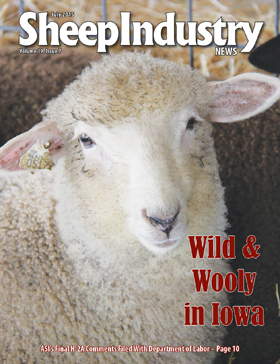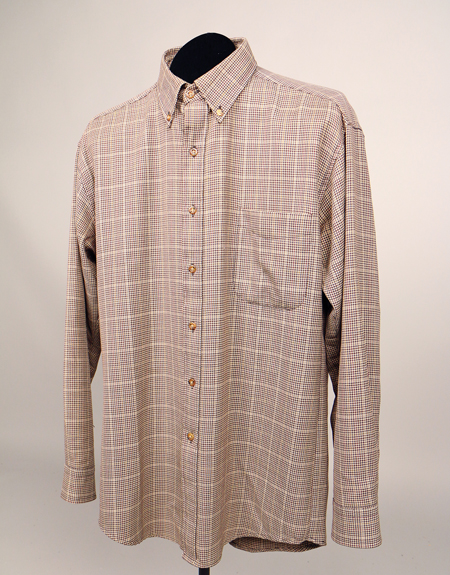
- July 2015
- President’s Notes
- H-2A Comments Come From Variety of Sources in Industry
- Iowa Gets Wild & Wooly at 11th Sheep & Wool Show
- Let’s Grow Grants Funded
- Market Report
- ASI Photo Contest
- Legislative News in Brief
- Trailing Festival Makes Plans
- Montana Program to Discuss Genetics
- ATHM Offers New Wool Exhibit
- Sheep News in Brief
- Wool News in Brief
- The Last Word
ATHM Offers New Wool Exhibit
The American Textile History Museum in Lowell, Mass., is proud to present Wonder of Wool: Ancient Fiber to Modern Marvel, on view May 20 through Dec. 21.
The exhibit takes a fascinating look at the significance of sheep and wool in our culture and our everyday lives, shattering myths and giving visitors a new understanding and appreciation of this fabulous fiber.
Wonder of Wool explores the unique characteristics of the fabric that have made it so useful both historically and today, with a broad range of uses. The exhibit shatters many of the misconceptions of wool: that it is itchy, only for cold weather, hard to wash, can’t get wet, and has a bad odor.
 Visitors to Wonder of Wool can experience the diversity of the wool fibers, from the rough and scratchy 19th century carpet wool to today’s supple and silky wool fabrics used in Joseph Abboud men’s suits. The exhibit also features woolen clothing through the centuries, from an 1800s cape to a 1924 men’s suit with knickers to a modern lightweight sundress. Visitors will see what wool fiber looks like at a microscopic level and how that translates to wearability and performance.
Visitors to Wonder of Wool can experience the diversity of the wool fibers, from the rough and scratchy 19th century carpet wool to today’s supple and silky wool fabrics used in Joseph Abboud men’s suits. The exhibit also features woolen clothing through the centuries, from an 1800s cape to a 1924 men’s suit with knickers to a modern lightweight sundress. Visitors will see what wool fiber looks like at a microscopic level and how that translates to wearability and performance.The exhibit explores the history of wool, with images and lithographs from the first recorded use by the Greeks and Romans to modern day. Bedouin desert nomads wore wool because it was cool. Until the 20th century, wool was a popular year-round fabric.
As a natural antimicrobial, wool wicks and dries more efficiently than many other fibers. As a result, wool is much more resistant to retaining odors than synthetic fabrics.
Visitors can put wool’s antimicrobial qualities to the test with the chance to smell – or actually not smell – a men’s wool shirt worn 100 days in a row without washing. Mac Bishop, a sixth-generation member of the family that owns Pendleton Woolen Mills, raised more than $300,000 on Kickstarter by wearing a stylish button-down Pendleton Mills shirt for 100 days straight and encouraging friends and strangers to smell it. Shockingly, the shirt smells as if it were freshly laundered.
The exhibit examines the tools of the trade and the dramatic changes in processing wool. Wonder of Wool features tools spanning hundreds of years, from 19th-century hand sheep shears to modern electric shears. The giant shears used to trim the surface of woolen broadcloth show the skill required of workmen who wielded these heavy implements 200 years ago, compared to the lawn mower-like machines used later.
“With all the technological advances in wool manufacturing, it all still comes down to a sheep,” said Diane Fagan Affleck, ATHM consulting curator for Wonder of Wool.
For thousands of years, sheep have been a primary source for wool. Wonder of Wool explores the long history of wool, which began before recorded history when primitive man first clothed himself in the woolly skins of the wild sheep he killed for food.
Today, sheep are bred to achieve distinct characteristics in their wool fibers: longer, shorter, coarser, and finer. Wool is one of the four most common natural fibers and, therefore, sheep have been of great interest to farmers, breeders, spinners, dyers, weavers, manufacturers, economists, politicians, and even artists. Images in the ATHM collection record the varieties of sheep developed by selective breeding, while others reveal the animals in their habitat or revel in the scenes they create.
An ancient fiber and a modern marvel, wool remains an important fiber with a new emphasis on making it easier to care for and more comfortable to wear.

